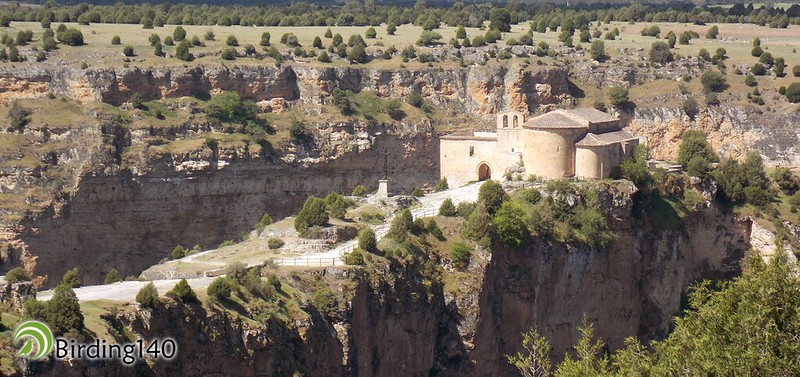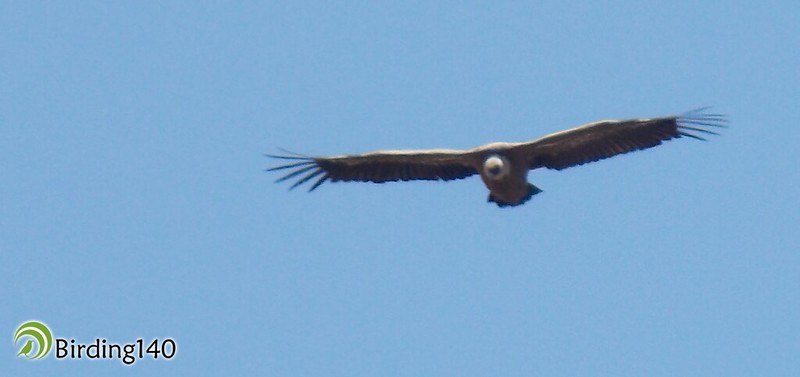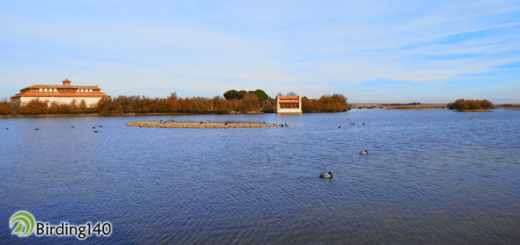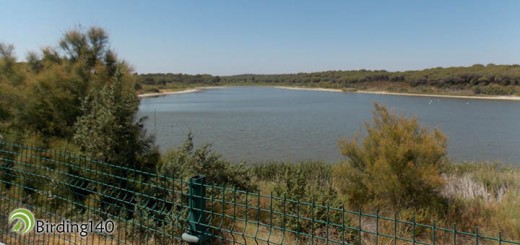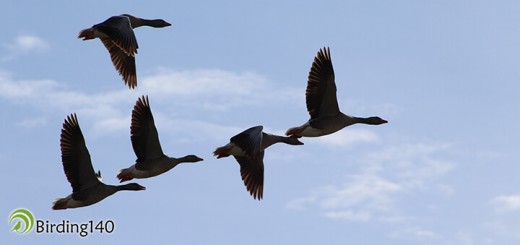Hoces del Río Duratón Natural Park is located on the east side of the province of Segovia. Along 27 kilometres, the Duratón River drills the limestone rock, reaching a depth of over one hundred metres in some zones. This area of over 5000 hectares was declared Natural Park in 1989, is a ZEPA zone and is included in the Natura 2000 network. The park stands out because it hosts one of the largest reproductive colonies of Griffon Vulture, with no less than 500 couples.
The best time to visit Hoces del Duratón is early winter. It is when Griffon Vultures spend more time flying. Due to the big influx of visitors, vultures have become accustomed to human presence, and we could confirm that Griffon Vulture specimens soar at really low heights without being frightened of tourists. But our plan also included seeing the Egyptian Vulture. This white vulture arrives to the park in mid March and leaves in mid September. During our visit, we were lucky and could see an Egyptian Vulture chick in the nest.
There are two walking routes to explore the park. The first one leaves from Sepúlveda and, between January and July, it is necessary to have a permit from the Interpretation Centre, because the walk goes very close to the vulture colony. If this limitation didn’t exist, vultures might interrupt their egg laying due to stress.
The path we chose requires no previous permit and leaves from the church of Villaseca. Vehicles can go across the dirt track, which is barely 5 km long and ends in a parking lot, and ideal place to see larks like the Dupont’s Lark, the Theckla Lark and the Tawny Pipit. It is also a good spot to see the Black-eared Wheater. The path that leaves from the parking lot passes in a smooth descent slope towards the bridge that reaches the chapel of San Frutos Pajarero (“bird breeder”), which would explain the amount of birds we could see on our way. The flights of the vultures taking advantage of thermal currents are so low that strangers bend down when they see them.
The views from the chapel are incomparable, with an amazing photographic plasticity. Ochre, reddish and greenish colours intermingle in a unique amalgam of special beauty, in contrast with the blue colour of the water. Here, the river makes a U that leaves a canyon full of corbels, flaps and cavities that are a delight for cliff-nesting birds. In the area of the chapel, which is believed to be of Templar origin, all kinds of Corvidae can be watched. The noisy jackdaws and Red-billed Choughs stand out. The latter play with the wind making tricks that bring them back to the wall of the canyon.
We should make a stop along the way and, provided that the chapel is open, crawl along the esoteric path that goes under the altar of the Saint after some trap doors. On the way out, it is worth looking at the cliffs on the right, where dozens of Griffon Vulture specimens gather at dusk. On those cliffs we can also see the Blue Rock Thrush, which has the habit of perching on the rocky overhangs and nesting in the cracks of the limestone wall. You can also see, with more difficulty, Peregrine Falcons and Eurasian Eagle-Owls among them.
For those who still want more, the path continues down the river until the ruins of the Monasterio de la Hoz. For the most dauntless, the path can be done on a horseback or, from another perspective, in a comfortable stroll by canoe, watching the canyon from below. Using this method it is easier to see the White-throated Dipper or the Common Kingfisher.
We are, without doubt, before a sanctuary for the Griffon Vulture and other cliff-nesting birds. The memory of the beauty of the landscape encourages us to go back. We will soon return to travel these paths again.

